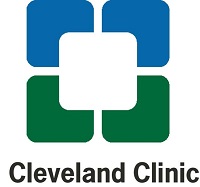Arrhythmogenic Right Ventricular Dysplasia (ARVD)

Overview
What Is Arrhythmogenic Right Ventricular Dysplasia (ARVD)?
(also called arrhythmogenic right ventricular cardiomyopathy)
ARVD is a rare form of cardiomyopathy in which the heart muscle of the right ventricle (RV) is replaced by fat and/or fibrous tissue. The right ventricle is dilated and contracts poorly. As a result, the ability of the heart to pump blood is usually weakened. Patients with ARVD often have arrhythmias (abnormal heart rhythms), which can increase the risk of sudden cardiac arrest or death.
What causes Arrhythmogenic Right Ventricular Dysplasia?
The cause of ARVD is unknown. It occurs in about 1 in 5,000 people. ARVD can occur with no family history, although often it runs in families. A family history of ARVD is present in at least 30 to 50 percent of cases. Therefore, it is recommended that all first- and second-degree family members (parents, siblings, children, grandchildren, uncle, aunt, nephew, niece) be evaluated carefully for this form of cardiomyopathy, even in the absence of symptoms.
Researchers have found two patterns of inheritance for ARVD:
- Autosomal dominant - When one parent has ARVD. Studies show that in these families, the family members have a 50 percent chance of inheriting the condition, although the symptoms and age of onset may be different between family members. ARVD is more prevalent in some geographic locations, such as Italy.
- Autosomal recessive (one form is called Naxos disease) - Characterized by the symptoms of ARVD listed above. Naxos disease is associated with a thickening of the outer layer of skin on the palms of the hands and soles of the feet (hyperkeratosis) and thick, "wool-like" hair.
Not all the specific genes have been identified as a cause for ARVD. Researchers are attempting to identify the specific gene mutations and locations of chromosomes associated with ARVD.
ARVD may also be related to non-genetic causes such as congenital abnormalities (affecting the right ventricle), viral or inflammatory myocarditis.
Symptoms & Diagnosis
What are the symptoms of Arrhythmogenic Right Ventricular Dysplasia?
ARVD is usually diagnosed at a young age (usually less than 40 years) and may cause sudden cardiac death in athletes. Symptoms may include:
- Ventricular arrhythmias: Irregular heart rhythms originating in the ventricles or lower chambers of the heart - The most common is ventricular tachycardia.
- Palpitations: Fluttering in the chest due to abnormal heart rhythms
- Dizziness, lightheadedness, or fainting caused by irregular heart rhythms
- Sudden cardiac death - can be the first sign of ARVD
- Heart failure - shortness of breath with activity, inability to carry out normal activities without fatigue, swelling in the legs, ankles and feet (edema)
How is Arrhythmogenic Right Ventricular Dysplasia Diagnosed?
ARVD is diagnosed based your on medical history, physical exam, and tests (echocardiogram, Holter monitor, electrophysiologic testing, cardiac MRI, and/or cardiac CT scan. Learn more about these tests.
Cardiac Magnetic Resonance Imaging (MRI) is recommended for the diagnosis of ARVD, as it visualizes fibro-fatty infiltration of the right ventricular (RV) myocardium. It also can show increased RV dimensions as well as wall-motion abnormalities. Unfortunately, the image quality frequently is limited due to artifact from irregular heart rhythms. For this reason, the patient may also undergo a cardiac CT scan to confirm or rule out the diagnosis of ARVD. This imaging test can detect characteristic abnormalities of the RV myocardium or the RV cavity. Unlike MRI, a CT scan can be performed if the patient has an implanted device (e.g. pacemaker, defibrillator).
The diagnosis of ARVD is confirmed if the patient has these characteristics:
- Abnormal function of the right ventricle (RV)
- Fatty or fibrous-fatty infiltrates of the right ventricle heart muscle (myocardium)
- Abnormal ECG
- Arrhythmias (supraventricular tachycardia, ventricular tachycardia or ventricular fibrillation, especially with exercise)
- Family history of ARVD
Treatment Options
How is Arrhythmogenic Right Ventricular Dysplasia Treated?
There is no known curative treatment for ARVD. Treatment is usually directed at controlling the patient's ventricular arrhythmias and managing heart failure. The primary goal of treatment is preventing sustained ventricular arrhythmias and/or sudden death. Thus, antiarrhythmic drug therapy is the most frequently used therapy. Frequent ventricular arrhythmias that have not been successfully treated with medical therapy may be treated with radiofrequency ablation. Patients who are thought to be at risk for sudden death are usually treated with an implantable defibrillator (ICD).
Patients with ARVD need to ask their physicians about exercise or participation in sports.
Story Credit: http://my.clevelandclinic.org/health/articles/arrhythmogenic-right-ventricular-dysplasia


